My trip to British Columbia in May and June was most definitely designed to result in an endless stream of food and drink experiences, but not every stop had to end in consumption. That’s why my last day in Victoria included an informative, education-first culinary tour of Chinatown. Our host was longtime chef and Vancouver Island native Heidi Fink, who rounded up the food-focused tourists across from Chinatown’s towering red gates. Victoria Chinatown dates to 1858, making it the second oldest community of its kind in North America, after San Francisco. At its peak, the Victoria’s Chinatown housed 40,000 people and spanned several city blocks. Now, it’s just a few blocks, and far, far fewer people, but still had enough stops to support an interesting culinary tour.
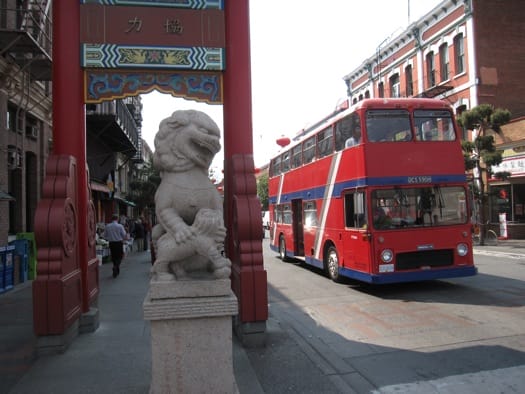
Heidi Fink has amassed plenty of international cooking experience, and that’s just in B.C. She’s from Port Albernee, a town with a big Punjabi population. Fink moved to Richmond for high school and lived alongside a large Chinese population. She spent time in cosmopolitan Vancouver before moving to Victoria. Fink drew on those experiences at Rebar. She’s hosted cooking classes for 11 years and led tours for almost four years.
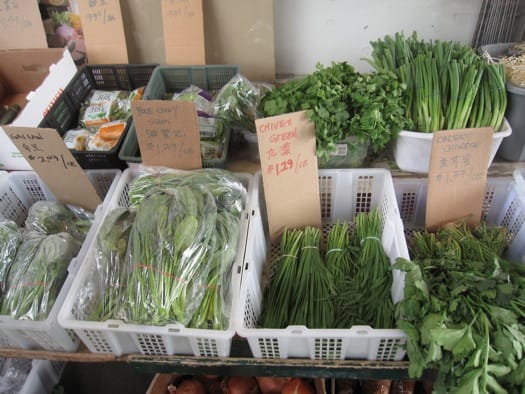
Tai Sang Co. is apparently well known among chefs for Thai and Vietnamese ingredients, and we learned why. Fink demystified ingredients on the tour, provided suggestions and advice along the way. According to Fink, the reason the produce is so cheap at Tai Sang Co .is low overhead, and that they’re willing to accept produce that isn’t pristine and won’t win beauty prizes.
At Tai Sang Co., we learned that “Mue” means baby and Choy “Sum” means flowering when referring to greens. Lo bok is the Chinese name for daikon. Gobo, aka burdock, works well as matchsticks, stir-fried with equal parts carrot, plus mirin and sesame oil. Siu choy, a shorter version of Nappa cabbage, is good stir fried at high heat, finished with ginger and chilies.
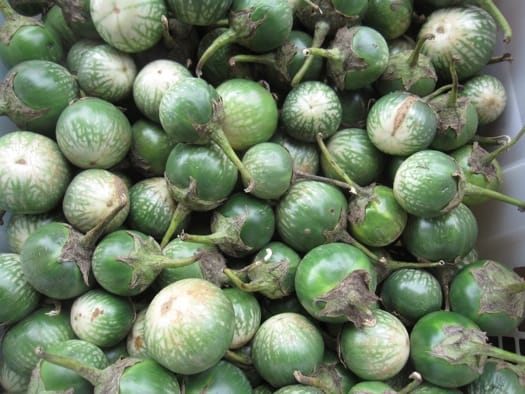
Green eggplant is a crunchier cousin to purple eggplant, which was also available.

Kohlrabi root appeared denuded, with its leafy greens trimmed.
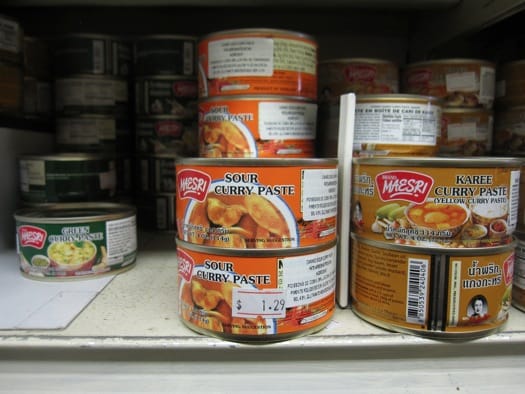
We moved to the shelves and learned to shake cans of coconut milk; if you hear something, steer clear because it’s low grade, loaded with emulsifiers. Fink called Maesri “the world’s best curry paste,” since their yellow, sour green and red curries contain more galangal and lemongrass, less overt spice. Golden Boy fish sauce is also a Fink favorite, and it increases in pungency after a year. If you had a hard time placing the flavor in pad Thai, it’s probably tamarind paste, a frequent base that gives the noodles red color, along with chilies.
Wah Lai Yuen Restaurant was closed, and Fink literally hurled herself at the window in protest.She called Wah Lai Yuen the “best bakery” for sesame and red bean balls, winter melon cakes, egg tarts and spongecakes. Oh well.
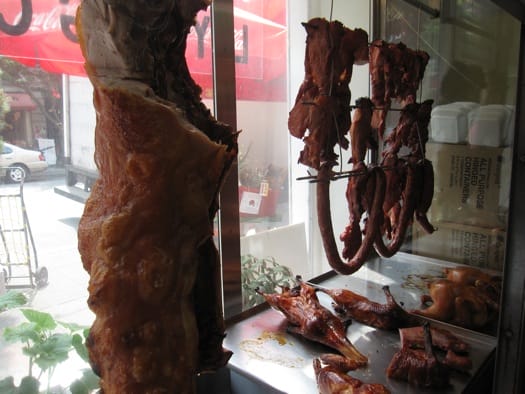
Loy Sing Co. was a nearby alternative.
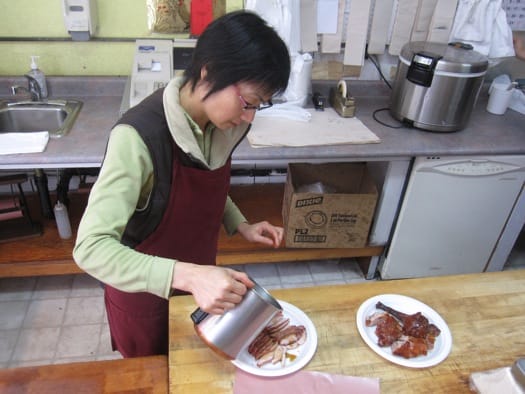
The owner pulls the meats from the window and chops them to order.
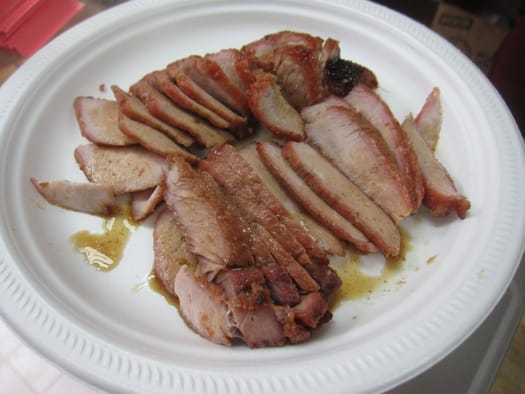
Sliced roast pork appeared on a paper plate sporting little else but jus. Duck with spicy ginger chile sauce could have been hotter, but it’s hard to argue with roast duck. They also sold sausages, pig ears and tongues.
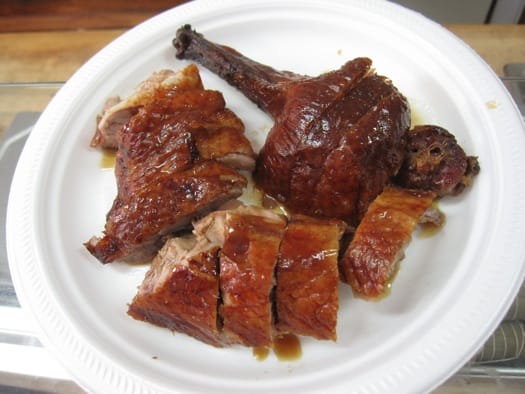
Fink returned to Loy Sing Co. bearing baked goods, saying, “It is the inferior bakery, but it will be adequate.” It was more than adequate. Flaky winter melon and red bean discs contained lard in the dough. A long bun featured coconut and sugar in the middle, and glutinous, sesame-lined balls contained red bean cores.

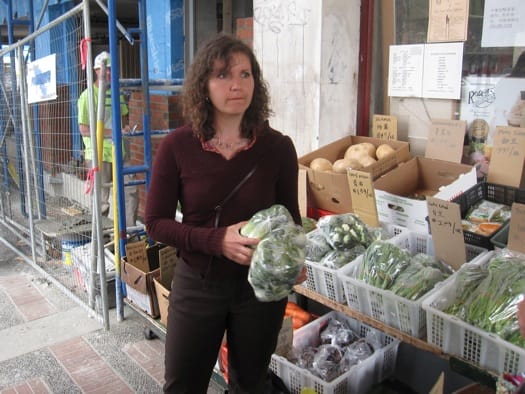
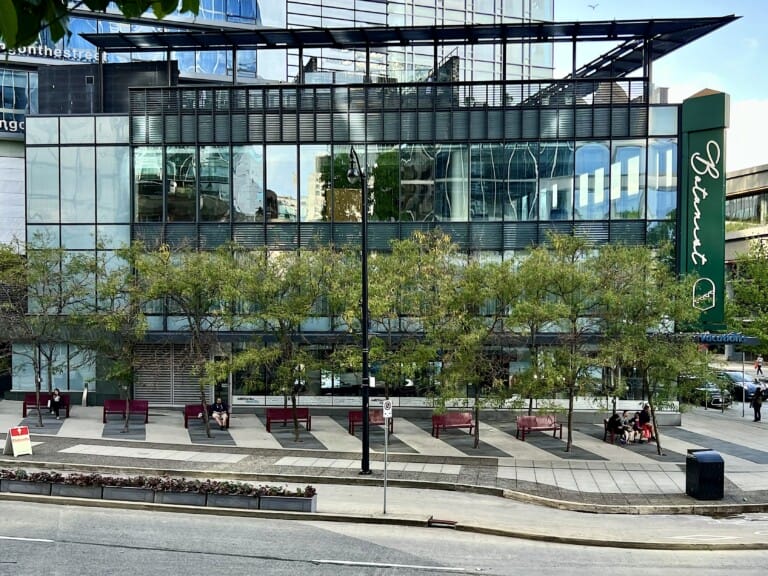






Leave a Comment